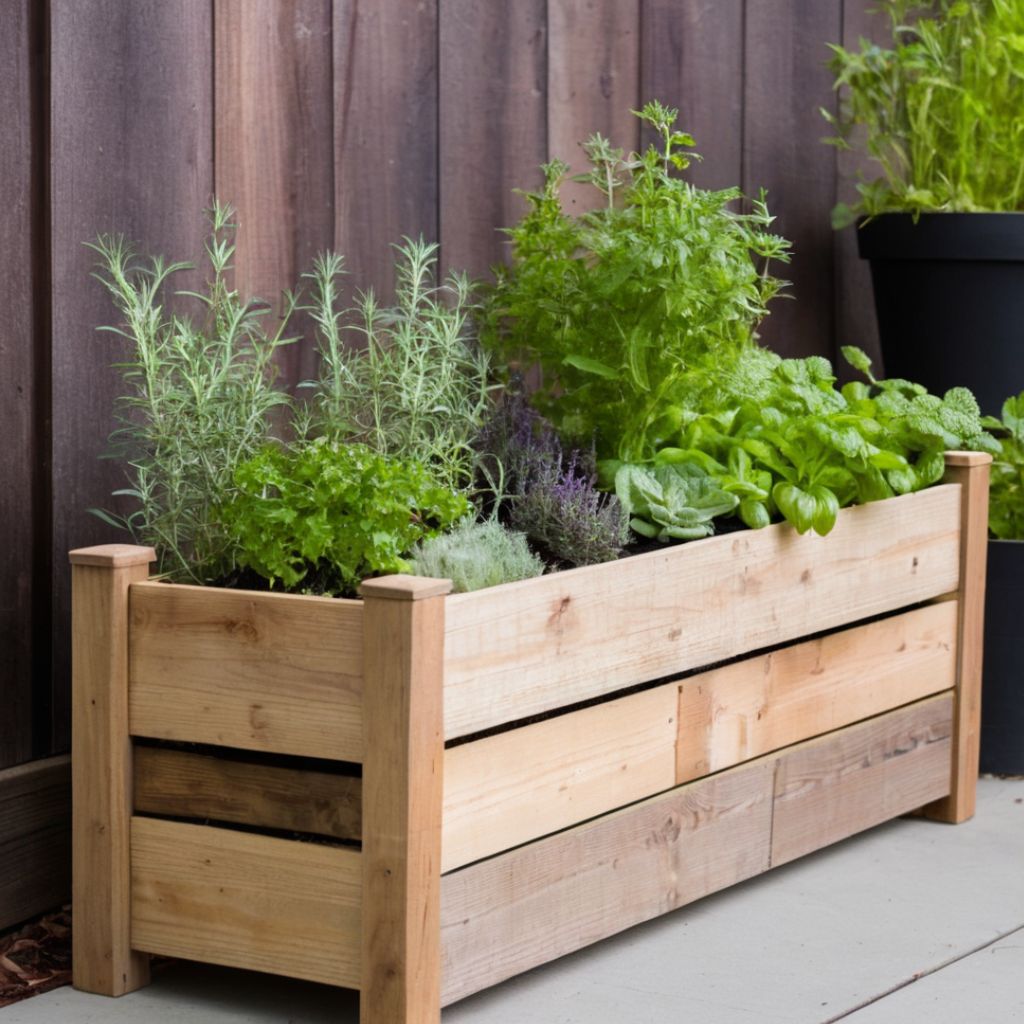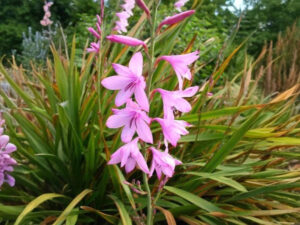
Growing herbs in containers is one of the easiest ways to start gardening, even if you don’t have a yard. Herb boxes allow you to plant a variety of herbs together in a compact space, whether indoors or outdoors. With just a few simple supplies, you can create a beautiful and functional herb garden that will provide fresh herbs for cooking all year long.
In this article
Things You’ll Need
To get started with your herb garden box, you’ll need just a few supplies:
- A container or window box at least 12 inches deep. Look for one with drainage holes in the bottom.
- Potting soil formulated for containers. Avoid regular garden soil which can get compressed.
- Herb plants or seeds. See below for suggestions!
- Small pebbles or stones for drainage (optional)
That’s it! With just these basic items, you can plant a thriving indoor or outdoor herb garden.
Buying Your Herbs
One of the best things about herb gardens is you can use almost any container – from simple wooden boxes, to ceramic pots, to repurposed items like crates or buckets. Just make sure whatever you choose is at least 12 inches deep so the herbs have plenty of room for their roots.

You can purchase already established herb plants from your local garden center, grocery store or farmers market. This is the quickest way to get an instant herb garden! Look for robust plants with healthy green leaves. Avoid any that are yellowing, wilting or have holes in the leaves.
Another option is to start from seeds, which is more economical but takes longer. The benefit is you can find a wider variety of herbs as seeds. Make sure to plant them 6-8 weeks before your last frost date.
Choosing Your Pot and Soil
The container and soil you choose are key to growing successful herbs. Look for containers with drainage holes in the bottom so excess water can escape. Plastic, ceramic, wood and metal boxes all work well. You can even repurpose household items like buckets or crates!
For the soil, avoid regular garden soil which can become compressed. Opt for a commercial potting mix made especially for containers. You can also make your own by mixing equal parts:
- Peat moss or coco coir
- Vermiculite or perlite
- Compost
This DIY mix will be loose and fluffy to allow drainage but also help the soil retain some moisture.
You can add a 2-3 inch layer of pebbles or stones at the bottom of the container before the potting mix. This helps increase drainage and prevents the holes getting clogged.
Putting the Herbs into the Pot
Once you’ve chosen your container and potting mix, it’s time to transplant the herb plants or sow seeds:
- For established plants, gently loosen the roots and place into the pot. Fill around with soil, packing firmly to avoid air pockets. Leave 1-2 inches at top.
- For seeds, plant them at the depth recommended on the pack. Gently press into soil and water well. Cover with plastic until they germinate.
- Place tallest herbs like dill in the center and shorter ones around the edges. This allows all plants equal light exposure.
- Water thoroughly after planting and let excess drain out holes.
And that’s it! In just a few simple steps you’ll have a flourishing herb garden.
Caring for Your Herbs
Caring for container herbs is low maintenance. Just be sure to:
- Water whenever the soil dries out. Don’t let them sit in waterlogged soil.
- Fertilize every 2-3 weeks with a balanced liquid fertilizer during growing season.
- Prune or harvest herbs frequently to encourage new growth.
- Provide at least 6 hours of sun per day, supplementing with grow lights as needed.
- Monitor for pests like aphids or spider mites and treat organically as needed. Catch problems early!
10 Herbs to Grow in Containers
When choosing which herbs to plant in your garden box, go for varieties that are easier to grow and more compact. Great options include:
- Basil – Fast growing with many uses like pesto, sauces, and more. Goes great with tomatoes!
- Oregano – Extremely hardy and flavorful for Italian dishes. Looks beautiful spilling over container edges.
- Chives – Simple grass-like leaves that regrow when cut. Adds oniony flavor to any dish.
- Thyme – Very drought tolerant and comes in lemon and other flavors too. Essential for roasts and stews.
- Sage – Tolerates some shade. Use leaves to flavor meats, veggie dishes, and Thanksgiving stuffing.
- Rosemary – Mediterranean herb that likes full sun. Use with chicken, lamb, potatoes and more.
- Cilantro – Fast growing herb perfect for Mexican and Asian cuisine. Great in salsas.
- Dill – Unique flavor essential for pickling. Attracts beneficial insects too.
- Parsley – Fresh garnish that energizes salads, meats, pastas and more. Regrows well when cut.
- Mint – Comes in many flavors like peppermint and spearmint. Spreads easily so contain it!
Tips for Growing Herbs in Containers
Growing a successful herb garden does take some basic care. Follow these tips:
Be Careful When Watering
Herbs prefer the soil to dry out between waterings. Overwatering can cause root rot. Always water deeply until it drains from the holes.
Provide Adequate Drainage
Avoid soggy soil by having drainage holes and a layer of gravel or stones at the bottom. This allows excess moisture to escape.
Choose the Best Potting Mix
Use a commercial soilless mix, not regular garden soil which compacts. Or make your own mix with peat moss, vermiculite and compost.
Give Herbs 6+ Hours of Sun Daily
Herbs love full sun! Turn the container periodically so all sides get even light. Supplement with grow lights if needed.
Space Herbs Appropriately
Give each herb enough room to grow. Taller ones in center, trailing types around the edges. Don’t overcrowd!
Harvest Often for More Growth
Pinching off leaves and stems encourages new growth. Herbs produce the most when harvested frequently.
Growing herbs in containers is an easy way to always have garden-fresh flavor handy. Follow these tips and enjoy your herb harvest!
Frequently asked questions
What size container do I need?
For an indoor herb garden, look for containers at least 12-14 inches wide and deep. This gives roots enough room to develop. Wider, shallow pots work for quick-growing annual herbs.
How often should I water my container herbs?
Let the soil dry out between waterings, then soak thoroughly. Herbs are very prone to root rot if overwatered. Check soil moisture with your finger before watering.
Should I fertilize my herbs?
Yes, fertilize every 2-3 weeks during the growing season with a balanced liquid fertilizer diluted to half strength. This provides nutrients without overfeeding.
How do I keep insects and diseases away?
Prune off any diseased foliage immediately. For pests like aphids, use insecticidal soap or neem oil applied to leaves. Avoid overcrowding and overwatering.
When should I harvest my herbs?
Harvest herbs frequently by pinching off leaves or cutting whole stems. This encourages bushier, tender new growth. Harvest before plants flower for the best flavor.
What size container do I need?
For an indoor herb garden, look for containers at least 12-14 inches wide and deep. This gives roots enough room to develop. Wider, shallow pots work for quick-growing annual herbs.
With the right container, soil, herbs, and a bit of care, you can enjoy homegrown herbs from your DIY herb garden box all season long.
Happy gardening!







